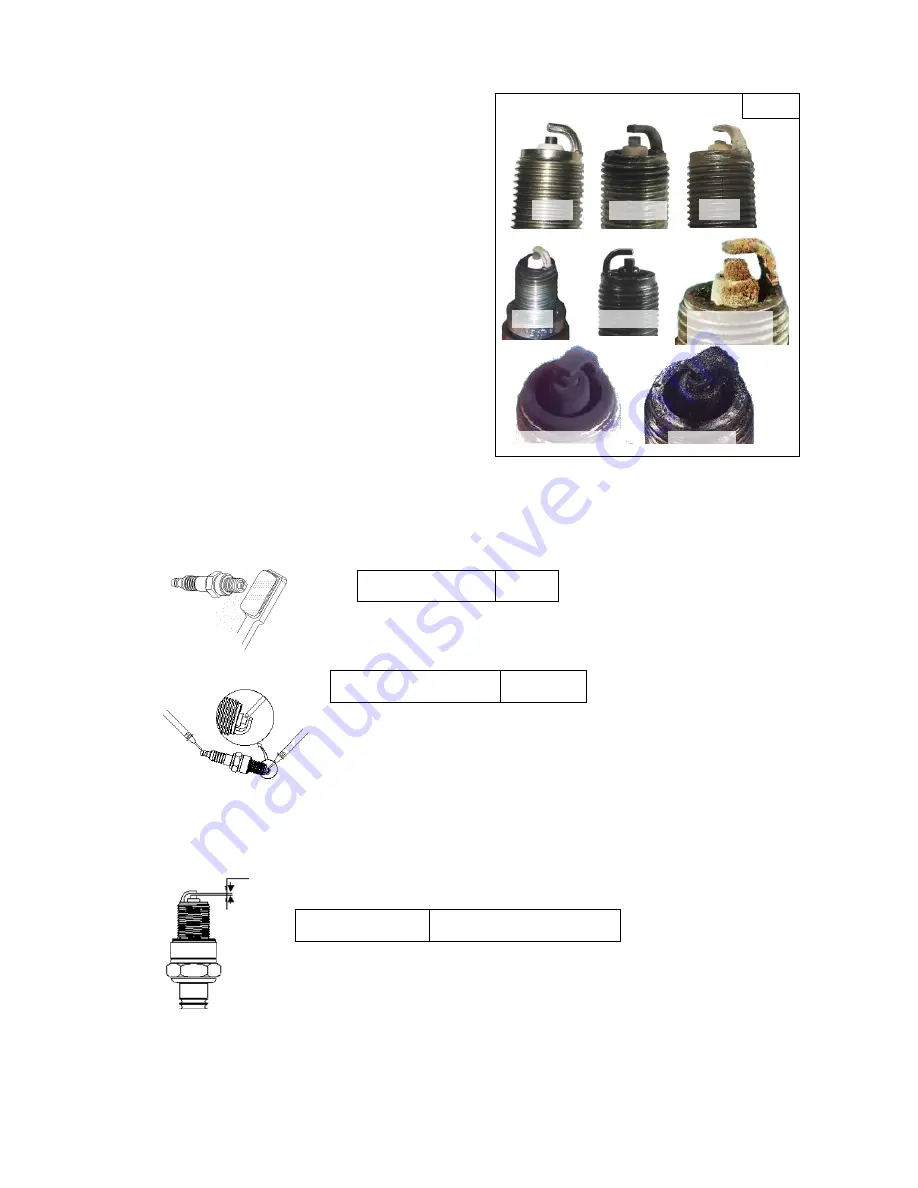
19
PH3300i SM, Rev. 2017-01-20
0.6
– 0.7mm
NEW
WORN
NORMAL
Carbon
– Too Rich
LEAN
FLOODED
Ash deposits -
Burning oil
Oil Fouled
Fig. 7
3.6 Spark Plug Inspection and Cleaning
1. Remove the spark plug using a plug wrench
and carefully inspect it. Compare the color and
deposits on the plug to Fig. 7. It should look
normal, or worn if it is time for replacement.
Evidence of lean, rich or flooded conditions
indicate there is a carburetor, choke, or fuel
delivery issue. Ash deposits are evidence of oil
burning under normal combustion conditions
and usually show up toward the end of the
engine’s service life; more frequent plug
replacement will be required. Oil fouling is
evidence of far too much oil entering the
cylinder, usually engine repair will be required
to fix the problem (sections 5.12, 5.13 & 5.14).
Oil burning can also be caused by a faulty
PCV valve (built into the valve cover). This will
cause large amounts of engine oil to get pulled
through the PCV hose, collect in the air
cleaner, and get sucked into the carburetor. If
this is the case, try replacing the PCV valve
(valve cover).
2. Remove carbon or other deposits with a plug cleaner or stiff wire brush. Check the sealing
washer for damage.
3. Measure the plug
resistance; replace the spark
plug if the resistance is
outside of these values.
4. Measure the plug gap with a wire-type feeler gauge. Adjust by bending the side electrode if the
measurement is not within the specified tolerance.
5. Install the plug finger tight to seat the washer and then tighten with a plug wrench. Torque the
spark plug to 11-13Nm (8-10ft-lbs)
or ⅛ of a turn after seating with a previously compressed
washer, or ¼ turn after seating with a new uncompressed washer.
Torque valve is 8.0-10 ft.-lbs. (11-13 Nm)
Spark Plug Type
F7RTC
Spark Plug Resistance
3 -
9 kΩ
Spark Plug Gap
0.6 - 0.7mm (
0.024” - 0.028”)
















































